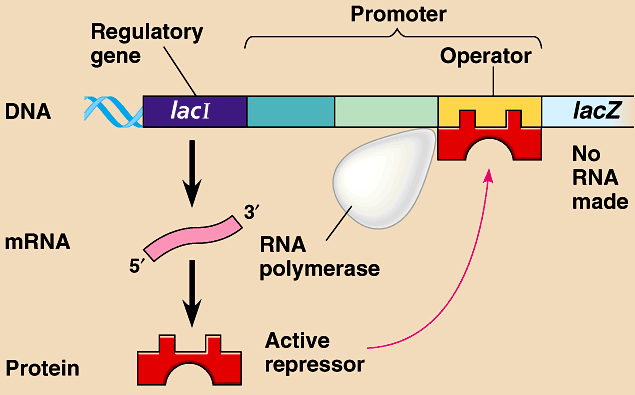What happens to lac repressors in E-coli when lactose is present?
1 Answer
Lac repressor protein will not be able to block the operator site of lac operon when lactose is present. Hence lac operon can express itself as the repressor protein is deactivated in presence of lactose.
Explanation:
The lac operon was one of the first operons to be discovered in E. coli bacteria.
An operon is just a group of genes/a segment of DNA that functions as single transcription unit. It is best understood in certain bacteria like E. coli .
It is comprised of a(n):
#color (blue)("operator" ("nontranscribable region where the repressor binds"))# #color (green)(promoter("site where RNA polymerase binds")# #color (purple)("structural gene" ("codes for protein of interest"))# #color (red)("regulator gene"("codes for repressor and controls gene regulation"))#


E. coli love glucose as their main source of energy. However, at times of low glucose concentrations, bacteria will use lactose instead.
Usually, the lac operon is turned off. This is because the regulator gene codes for a repressor protein which is actively present and bound to the operator. Doing so, prevents RNA polymerase from travelling towards structural genes, hence preventing transcription of RNA for production of the key enzymes needed for lactose metabolism.
In the specified scenario, when hi levels of lactose are present, an isomer form of lactose, allolactose , will go and bind with the repressor protein to make it inactive. This will allow the operator region to be clear of any roadblocks and give RNA polymerase a chance to transcribe the genes for the enzymes.
RNA polymerase cannot do a great job by itself. So, it is assisted by catabolite activator proteins (CAP). These protein are transcription activators and become activated when cyclic AMP (cAMP) levels build up inside the cell, consequently binding to CAP molecules and making it able to bind to DNA, increasing transcription.

